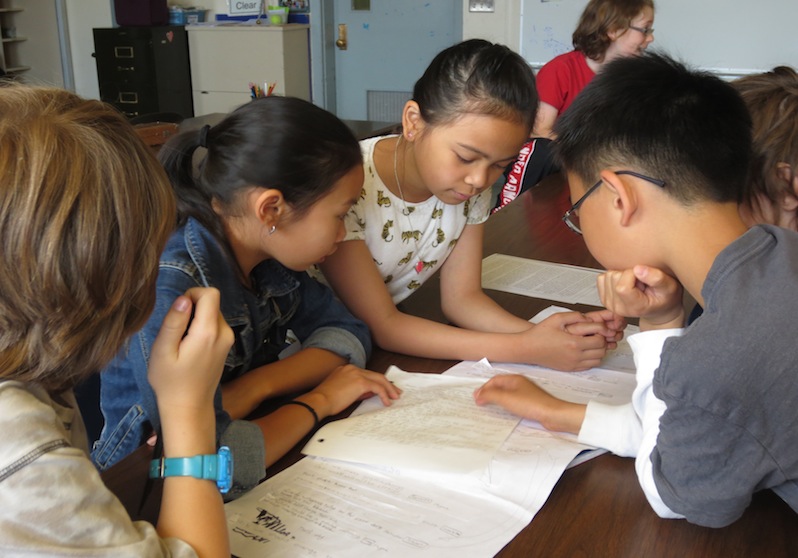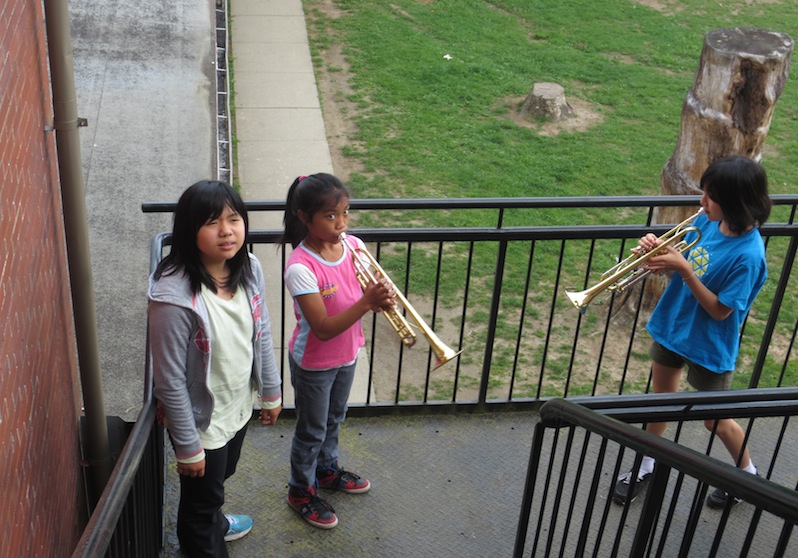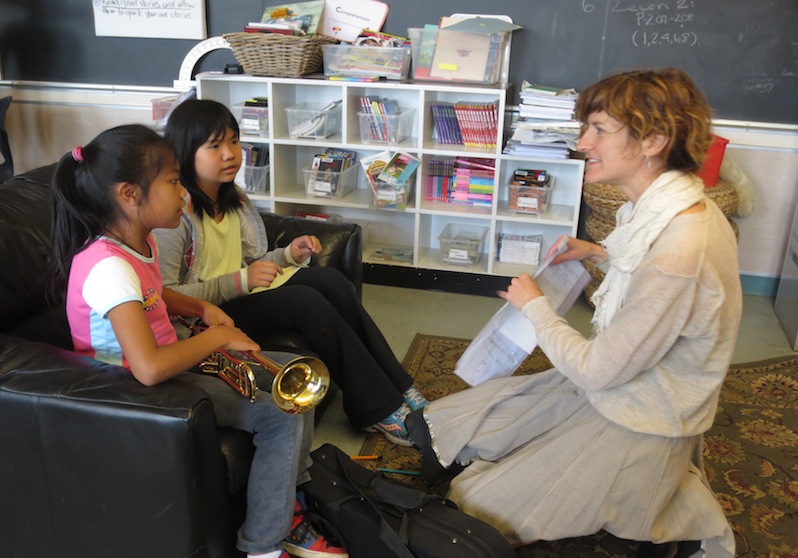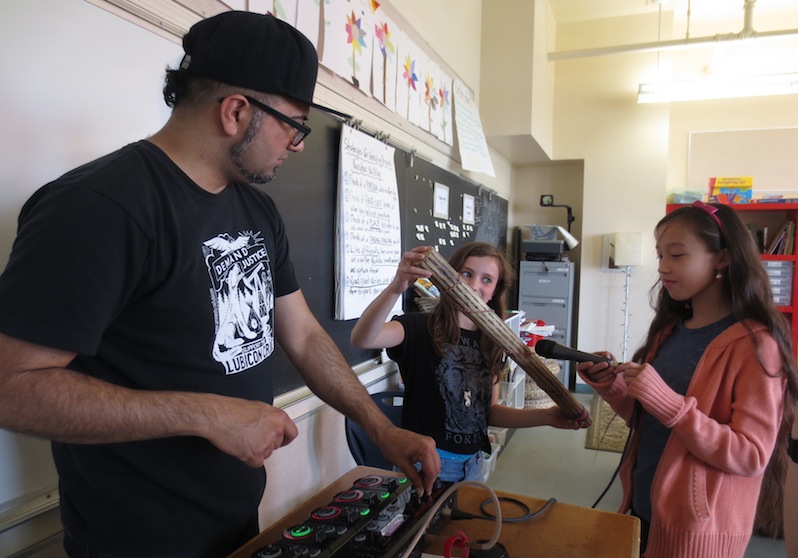Lord Selkirk Gr 5/6
Arts Education, Language Arts, Social Studies
School
Lord Selkirk Elementary, Vancouver
Teacher(s)
Karina Houle
Artist(s)
Rup Sidhu
Class
Grade 5/6 French Immersion
Connection to the Vancouver Biennale Exhibition
Students connected to specific images and Legacy installations found in the 2009-2001 Vancouver Biennale Catalogue and discussed how art exposes viewers to different perspectives and meanings.
The curatorial theme of the Vancouver Biennale 2014-2016 Exhibition is Open Borders / Crossroads Vancouver. This project relates to the Exhibition Theme in many ways:
• Crosses boarders as students learn about the experiences of children and communities all over the world.
• Creates a crossroads of understanding and action as students use their learning and skills to promote change and raise awareness about social justice issues.
• Students learn to cross boarders as they collaborate together to talk about issues they collectively care about through spoken word.
Other Sources of Inspiration
Foli, There is No Movement Without Rhythm by Thomas Roebers and Flortis Leeuwenberg – an exploration of rhythm.
Where I Belong by Arinze Eze – documentary about self-identity and cultural struggles
Overview
Beginning with a reflection on local and international Biennale art, students explored different perspectives and the influence of culture on identity and perception. Linking personal and cultural identity to values, students were challenged to research issues they felt passionate about surrounding inequality and human rights. Through spoken word poetry, musical looping and rhythm workshops students learnt to express their knowledge and passion about these social issues from around the world. Working collaboratively, students created spoken word poetry and accompanying music that they recorded and performed at their school.
BIG IDEAS
Our cultures and identities
Guiding Questions
How does your identity and culture shape your understanding of the world around you?
Curriculum Access
Arts Education and Language Arts: Students created music looping performance, using vocal percussion, rhythms, instruments and original spoken word poetry to expressed their passions, knowledge, and interests. Students contemplated the purpose of language, cooperation, and music to express oneself.
Social Studies: Students leant about the Canadian Multiculturalism culture in Vancouver and around the world. Students reflected on the history of Canada and Vancouver and the many cultures found there.
Learning Process
An Exploration of Culture and Inequality
Looking at art through the Vancouver Biennale catalogue, students reflected on which images they connected with on a personal or cultural level. Sharing their responses, they discussed how public art exposes viewers to different perspectives and artist meanings. To further this inquiry, students investigated other cultures, exploring the complex elements involved in culture and the way that culture influences how we build our identity. Connecting their identity and values, students used critical thinking activities to compare different situations children face from similar and different cultures. Students explored the topic of inequalities for children through the Convention of the Rights of the Child in Canada and the World. They viewed videos by Macklemore & Ryan Lewis’, and the National Film Board on human rights and discussed injustices and the treatment of others.
Values Shared through Spoken Word Poetry
Students continued their exploration of their values by writing free form prose on what they do, who they are and the issues in the world that they feel passionate about. The class collectively made a list of these issues and conducted discussions about them. Students individually chose a topic of interest to make the world a better place and conducted research on that topic. These topics surrounded issues of injustices and human and children’s rights. They were then broken off into groups to address similar issues such as homelessness, animal abuse, global warming, war, slavery and child labour. Students worked in groups to create collaborative writing around their chosen issues using metaphors, facts, personal thoughts and other poetic devices learnt in class. Their artist led workshops on how to create a dynamic and dramatic performance piece using speed, volume, repetition and echoes for a finale. The students practiced, learned to play with rhythm as a group, and cooperated with their peers to produce a collaborative spoken word piece with accompanying looping music and choreography. The teacher recorded their voices and the artist blended both music and the spoken word piece together. The students presented their piece to their peers and parents at the school.
Student Creation
- Spoken word poetry about a variety of global and human rights issues
- Music to accompany the poetry, recorded into a loop
- Recording of both voice and looping
- Choreography of body position and rhythm of their spoken word presentation
Taking Action
Students shared their learning about diversity, identity and chosen social issues through a performance to their school with the hope that their peers would reflect and take action. They also participated in a fundraising activity for clean water for children around the world and walked 2 KM every day for a week in order to collect $2000 for UNICEF.
Time Line
November – March
- Culture unit
April
- Discussions, explorations, and interpretations of various Biennale artworks in the city and around the world by looking at images
- Explored and learned about the Convention of the Rights of the Child and basic human rights issues, and self identity
- Free writing on identity and values
- Class discussion of issues they care about and are passionate about
- Research conducted on their inquiry and topic chosen, such as child labour, homelessness and global warming
- Class lessons on metaphor and poetic devices
May
- Groups collectively write poetry, personal thoughts, facts about their chosen issue
- Artist workshops on how to create a dynamic performance
- Creation of music to accompany the poetry
- Recording and looping of music to practice with words
- Choreography of body position and rhythm of their spoken word presentation
- Practice and rehearsals
- Performance to classes and parents
Reflection
Teacher: Karina Houle
Students quite enjoyed having Rup in the class and explore their own passions. They learned to make big compromises through this process, take risks, and discuss at lengths the message they wanted to convey in their spoken word piece and the meaning of each metaphor or even words chosen. They developed more confidence in themselves by exploring with their voices, playing with rhythm and echoes, and showing true feelings in their performances. They were simply amazing! Rup, our artist was an inspiration to them on how words are powerful and how to question ones beliefs and actions.
It was a fantastic opportunity to learn more about the inquiry process, explore further Biennale artworks, and have this valuable opportunity to have an artist in the class that can bring something new and exciting for the students and the teacher! Thank you so much!
Related Material
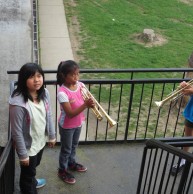 Lord Selkirk Spoken Word Poetry
Lord Selkirk Spoken Word Poetry